This year for Christmas, gift yourself with an amazing experience. Apply today for the 2018 CSHL Cell and Developmental Biology of Xenopus course.
Posted by Heather Ray, on 18 December 2017
The end of the year is quickly approaching, and if you are anything like me you are scrambling to try to get as much work done as possible before your holiday break. But while this frequently entails getting papers submitted, committee meetings completed, and experiments wrapped up, I also take the opportunity to reflect on what has happened over the last year, and where I want to be in the upcoming year. This time last year, I was a brand new post-doc. I was just getting settled into my new lab working with Dr. Chenbei Chang, a new city and University, the University of Alabama at Birmingham, and most exciting for me, a new model organism in Xenopus laevis. I was looking forward to new challenges including adding to my science toolkit and interacting with a new community of scientists. I had some general ideas of what I wanted to accomplish in my first year in the lab, but these ideas were still pretty vague as I was just trying to figure out the direction I wanted my research to take.
It was at this time that Chenbei told me about several educational opportunities I might be interested in, including the Cell and Developmental Biology of Xenopus Course run out of the Cold Spring Harbor Laboratory. I have many friends who have taken advantage of these types of specialty courses, from both CSHL and the Marine Biological Laboratory, and heard great things about them. I had always wanted to take part in one of these courses myself, but had never applied due to a myriad of excuses mostly centered around the time it would require out of my normal schedule. But this time, I would not let myself be deterred and was resolved to apply to and attend this course. “What better time to take such a course?” I mused. I am just getting started in the lab so it will be easier to get time away. I will get to learn a bunch of techniques in a short amount of time that will really get me jumpstarted on my own research. And for me, the most intriguing draw to the course was the opportunity to meet all of the amazing instructors that would take part in the course. Who better to learn a technique from than the person for whom the technique is named (Keller sandwich anyone?) I quickly got my application materials submitted and then waited, rather impatiently, for a reply.
Once I heard that I was accepted, I immediately started planning. One part of the current course is to learn how to use CRISPR/Cas9 technology to target your gene of interest in Xenopus embryos. I had just started working on a particular gene in the lab and was excited to try to target it at the course. I submitted the genomic information I had to one of the course TAs and there was a set of custom guide RNAs waiting for me upon my arrival at the course. I also thought about how I might perform experiments at the course relevant to my own research and planned to ship myself some reagents. With great anticipation, I arrived at Cold Spring Harbor on a cold, dreary day in March. Despite the weather, I thought the campus was beautiful and I could just feel the great energy that surrounds this place, where so many great scientific minds have come together.
I won’t bore you with all of the details of my own experience, but suffice it to say that the experience met, and exceeded, all of my expectations. The course directors, Karen Liu and Mustafa Khokha, put together an amazing course. As you can probably guess, my expectation of great experimental data was entirely too high, but what I didn’t bring home in data, I brought in ideas and techniques and enthusiasm. One of the great aspects of a course like this is flexibility. The students attending the course all have different backgrounds and levels of experience with Xenopus. The aim of the course is to provide to the students what they, in particular, feel they need. So while there is a general outline of the techniques that will be taught in the course, you as an individual are free to ignore a technique that you feel comfortable with and instead concentrate your time on the techniques you want to learn more about.
For me, the absolute best part of the course was all of the people involved. Karen and Mustafa bring in a great variety of instructors with all levels of experience. There are classic Xenopus embryologists, such as Ray Keller, who showed me one-on-one how to physically manipulate my embryos. But there are also instructors that use Xenopus in completely different and unexpected ways, such as Peter Nemes who is working to push the limits of in vivo metabolite detection. Another unexpected gift of this course was a new and spontaneous collaboration between myself, another student, and an instructor that spans three different countries and resulted in a manuscript currently in preparation. I made so many great connections with other students, TAs and instructors whom I hope to know as colleagues for many years to come.
And so with these final thoughts I ask you, are you a student, post-doc or faculty looking for a transformative experience that will last for many years to come? Are you currently working with Xenopus as a model system or are you curious about what working with this organism would be like? Are you looking for collaborators and colleagues in this field? This year for Christmas, give yourself the gift of an amazing learning experience and apply for the 2018 Cell and Developmental Biology Course to be held April 4-17 at the Cold Spring Harbor Laboratory. Applications aren’t due until January 31st, 2018 so there is plenty of time to apply! You won’t regret it.

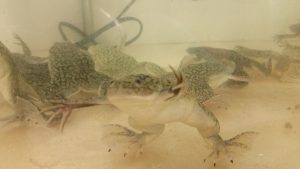
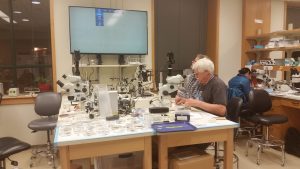
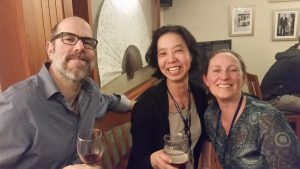
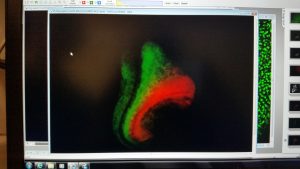
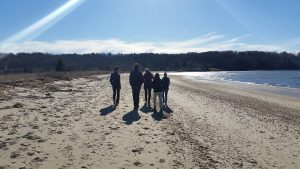


 (3 votes)
(3 votes)